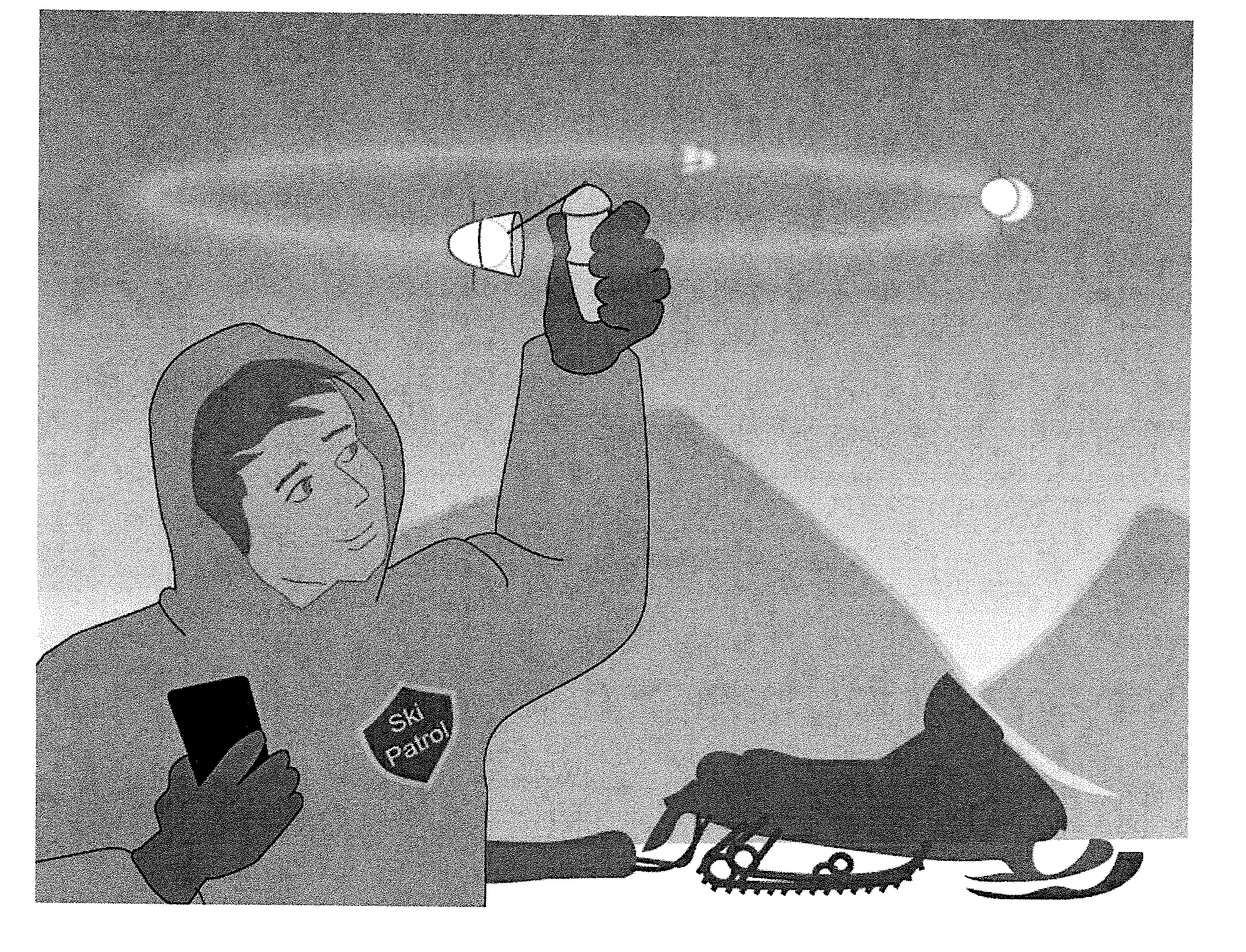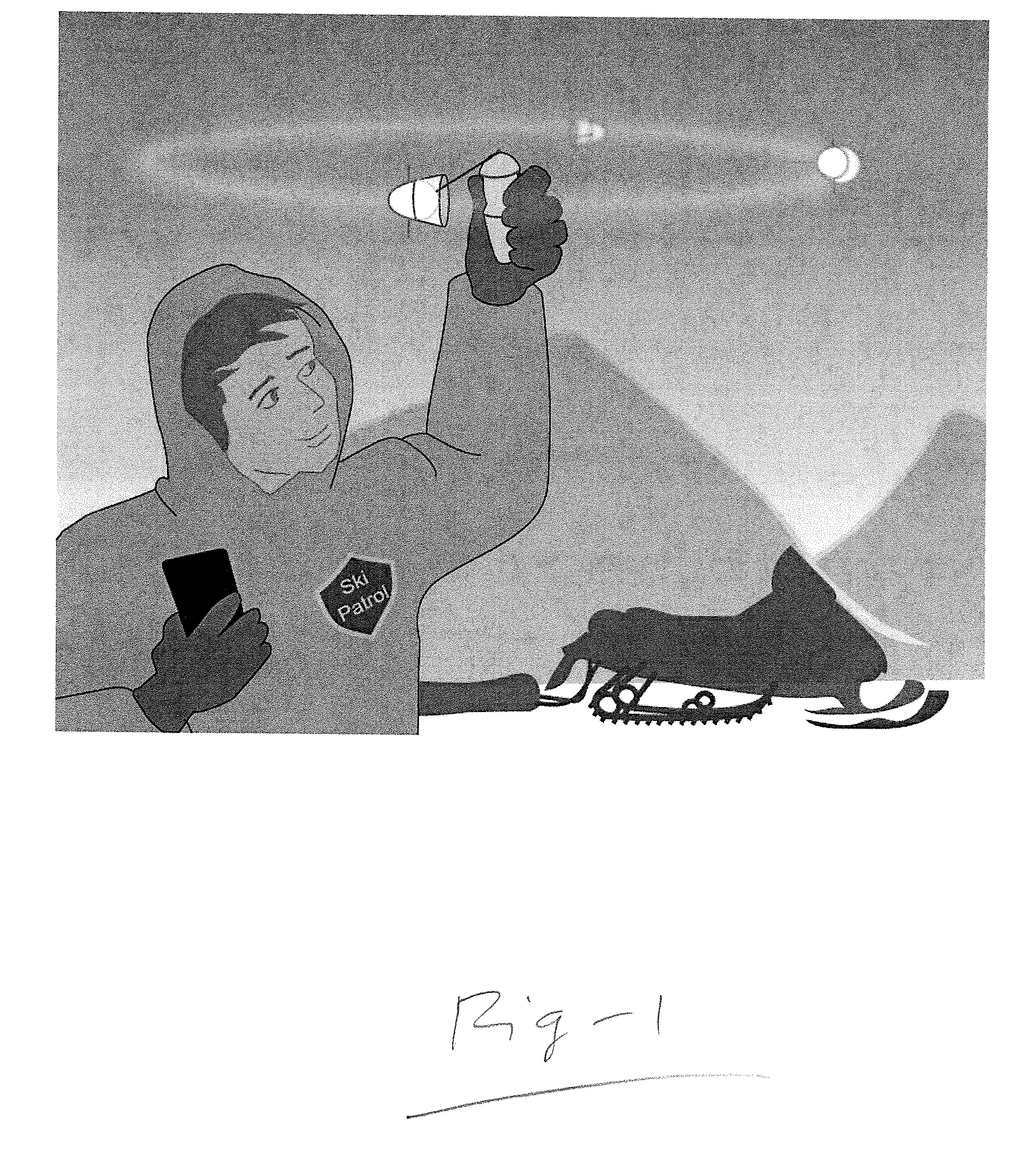Holonomically constrained (tethered) spin-around locator
a locator and spin-around technology, applied in direction finders, instruments, antennas, etc., can solve the problems of difficult extraction of information from signals in the presence of interference, low-power transmissions are subject to signal corruption, noise is very difficult, etc., to achieve enhanced distance and location accuracy
- Summary
- Abstract
- Description
- Claims
- Application Information
AI Technical Summary
Benefits of technology
Problems solved by technology
Method used
Image
Examples
Embodiment Construction
[0015]I have discovered that a locator which uses two-way measurements of TOA (time of arrival) and Doppler shift may be connected wirelessly to a smartphone and spun around on the end of a tether. A reasonable communication scheme for connecting the locator to a smartphone, for example, would be Bluetooth low energy. See my issued U.S. Pat. Nos. 7,791,470, 7,573,381, 7,592,918, 7,646,330, 7,864,045, 7,917,155, 7,936,271, 8,258,923, RE43740, 8487756, RE44526, 8583145, and RE45061, the entire content of each being incorporated herein by reference.
[0016]In addition to the two-way distance and Doppler measurements which enable direction and distance readings per my '470 patent, I have since found that the locator can further process the captured and stored correlation results obtained in positions as it rotates on a tether. This further processing creates a virtual circular phased array antenna which may be “aimed” or oriented after all of the signals have been transmitted and received...
PUM
 Login to View More
Login to View More Abstract
Description
Claims
Application Information
 Login to View More
Login to View More - R&D
- Intellectual Property
- Life Sciences
- Materials
- Tech Scout
- Unparalleled Data Quality
- Higher Quality Content
- 60% Fewer Hallucinations
Browse by: Latest US Patents, China's latest patents, Technical Efficacy Thesaurus, Application Domain, Technology Topic, Popular Technical Reports.
© 2025 PatSnap. All rights reserved.Legal|Privacy policy|Modern Slavery Act Transparency Statement|Sitemap|About US| Contact US: help@patsnap.com



